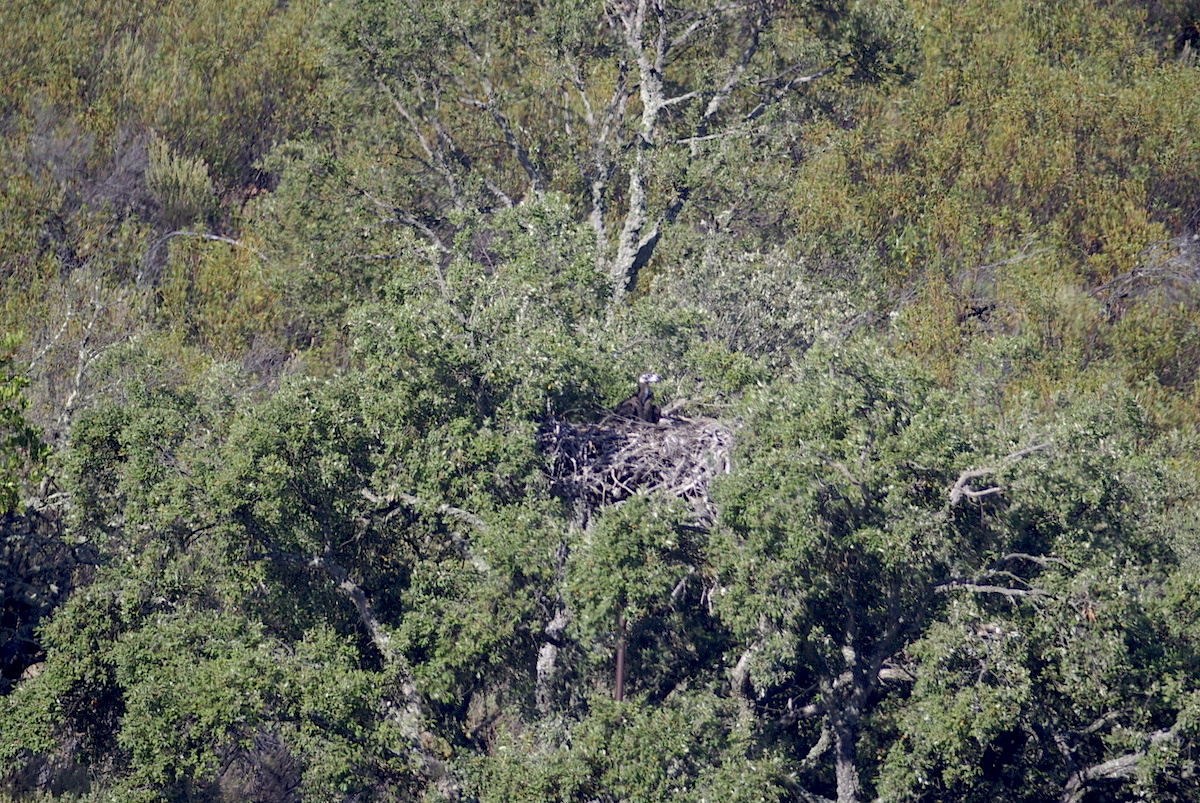A Black Vulture chick was born in Alentejo, in the South of Portugal, after 40 long years, thanks to conservation efforts. This is a Critically Endangered species in this country with only 15 pairs in three breeding colonies.
The chick has two months old now and it’s being taken care by its parents, one of two pairs breeding in Contenda Homestead, in the heart of Alentejo, near the border with Spain. This is the third breeding colony in Portugal.
The pair is using one of the 12 artificial nests built and placed on top of big trees three years ago by the conservation Portuguese organization Liga para a Protecção da Natureza (LPN) at Contenda Homestead. The nests were built in order to help Black Vultures’ (Aegypius monachus) return to that region.
Back in March, LPN revealed that two of those 12 nests were being occupied by this species, the biggest bird of prey in Europe. Now, one of the pairs has a chick. And this little one will start flying by its own by August. “This means we achieved one of our main goals: the return of the Black Vulture to Alentejo”, Eduardo Santos, conservationist at LPN, told Wilder.
In Portugal, this species only breeds in Tejo International (12 pairs), in Douro Internacional (one pair) and now in Alentejo (two pairs).
Nearby, at the other side of the border, in Spain, there is a big colony of 100 pairs. “We don´t know if these two pairs in Contenda came from that colony but its very likely”, he said.
Eduardo Santos believes this chick is just a first step towards the return of the bird to a territory it once had.
Meanwhile, the two adults are busy feeding their young in its nest, in a quiet rural region, with plenty of food.


